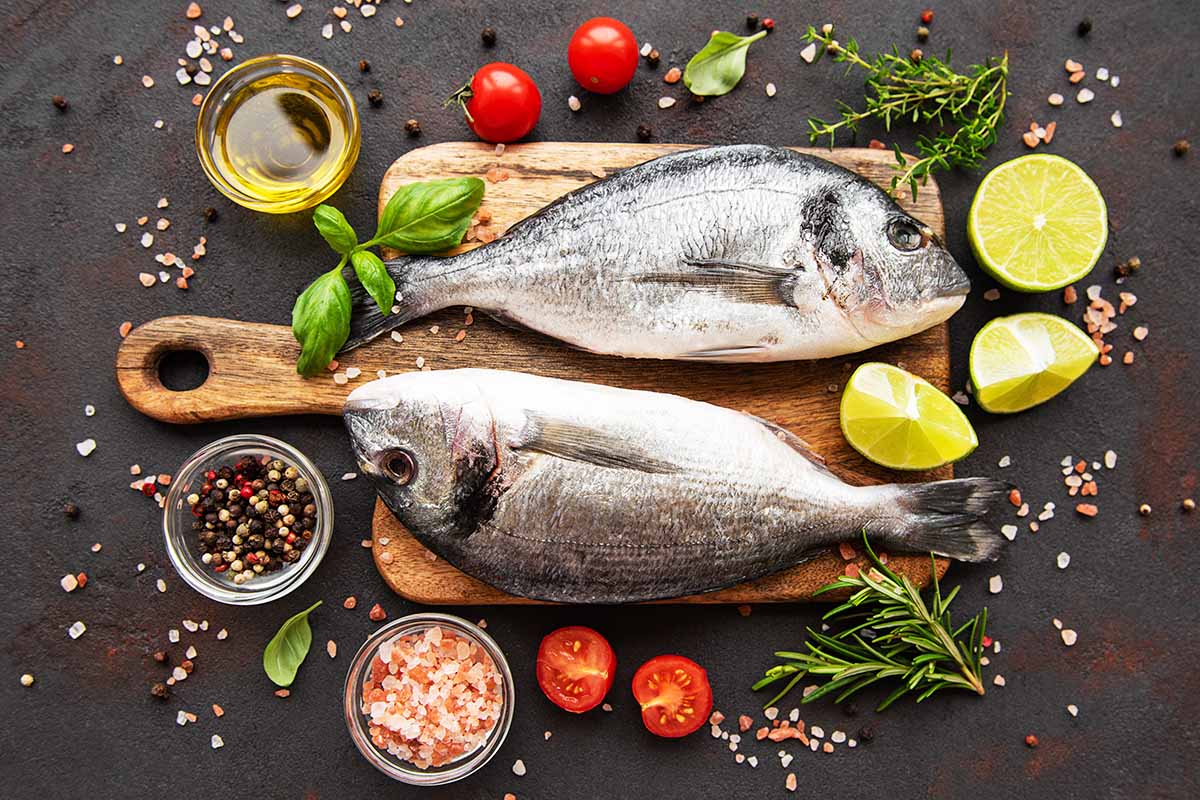Seafood stock is a must in our house, especially when Christmas rolls around.

Every year, I make a salmon chowder just like my grandmother used to on Christmas Eve.
To make this chowder, I need seafood stock. Normally I spend half my time running around town trying to track down fresh-made soup instead of buying it in cartons at the store.

Usually, the ones at the store are not very flavorful, so I have to find the stuff that’s made fresh at local seafood markets. Of course, this tends to get pricey, especially when I am cooking for about twenty people who will be gathered around my dinner table for the holiday celebration.
Thanks to this recipe, I’ll never need to track it down again.
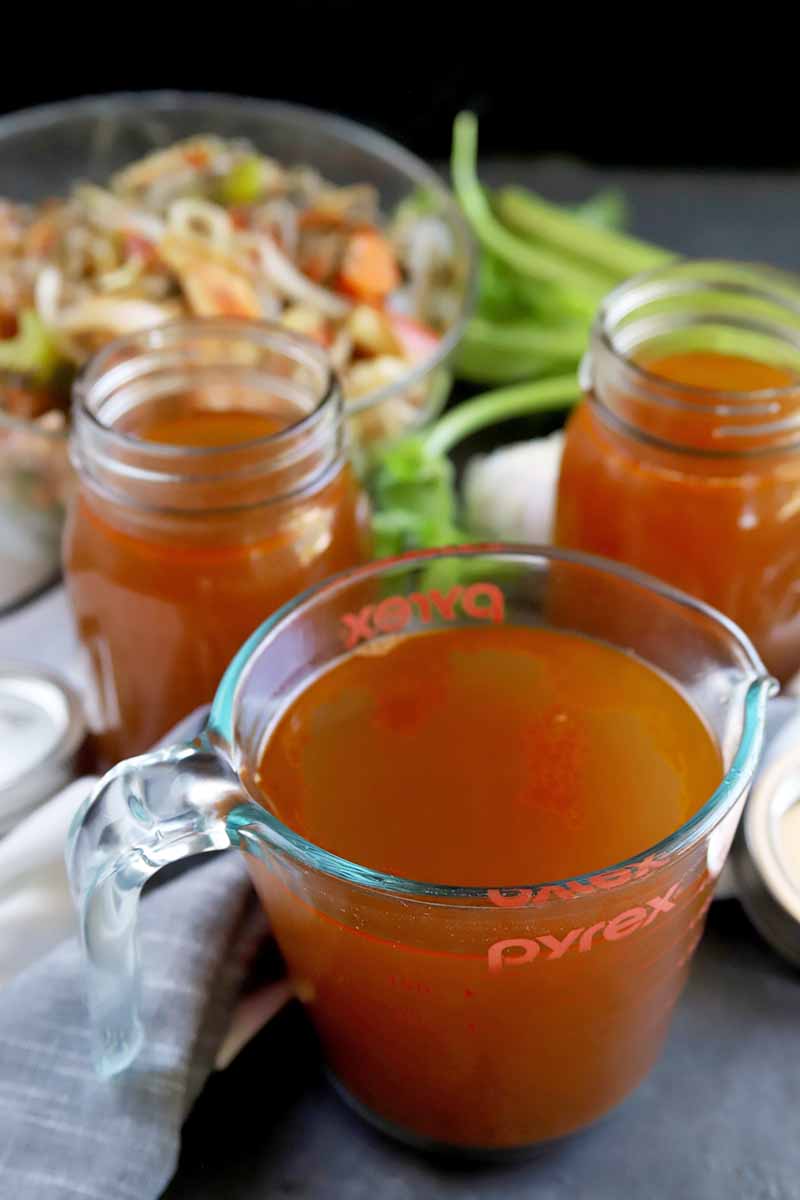
To me, this is a double bonus: not only do I get the flavorful soup that helps to make my chowder so outstanding, I also get a dose of whatever types of shellfish I want. I mean, you have to get the shells somehow, don’t you?
This means you can have a feast of shellfish, then save all the shells instead of throwing them out like you normally would.
I have seen stock recipes that use the meat in the shells, but to me, that seems like a waste. It’s better to cook up the shellfish and enjoy them that way, and then put those leaving to good use in a flavorful homemade broth.
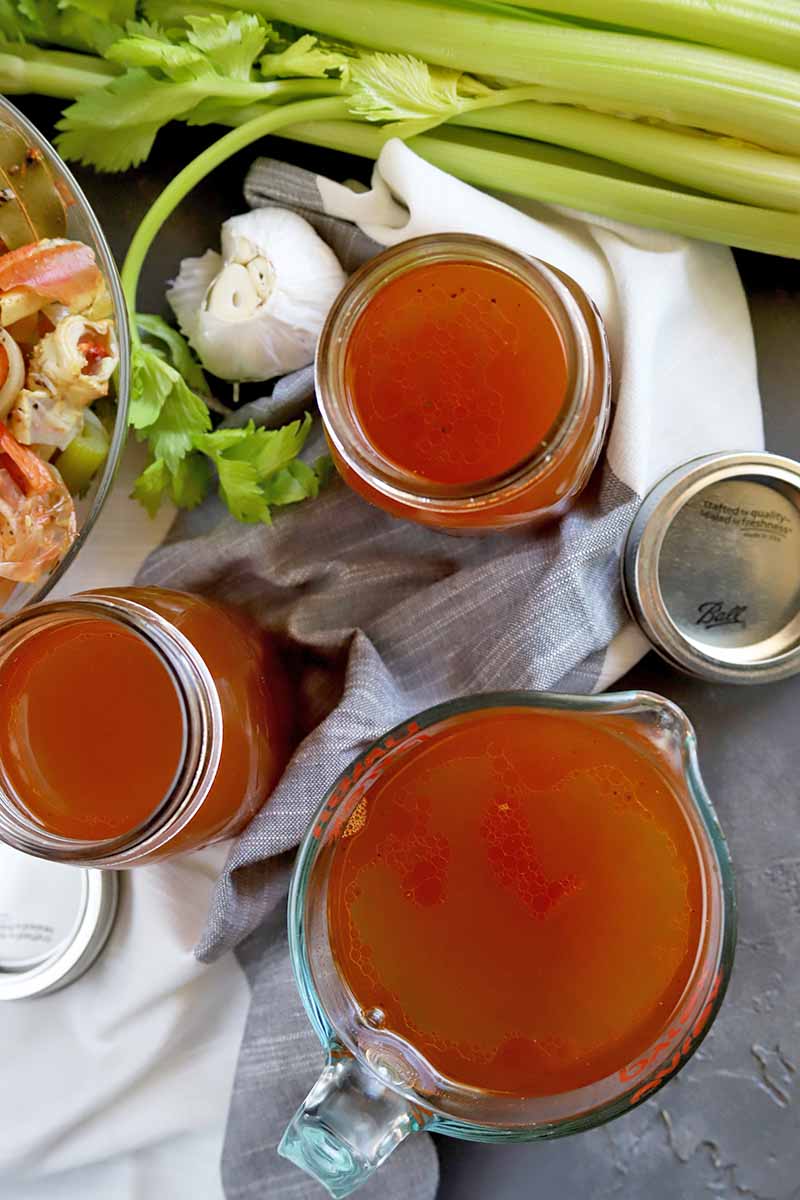
You can even save up the shells over time, storing them in resealable bags in the freezer until you have enough to make this recipe.
Use it in any dish that calls for seafood stock. It doesn’t matter if it asks for lobster, fish, shrimp, or any other kind. You can make it yourself!
Not only will you save money by not having to purchase boxed broth every time you need it, it also tastes so much better than anything you’ll find on the shelves at the store. You can use it for gumbo, chowders, cioppino, and more.

If you really want to go for it, you can double or triple the batch if you have plenty of shells ready and available.
Pulling together this recipe is incredibly easy, because all you have to do is roughly chop up some vegetables and smash up the larger pieces of shells. You saute everything together until it’s browned and the flavor has been released a little more from the ingredients. Then you add the water, and let it simmer for about an hour.
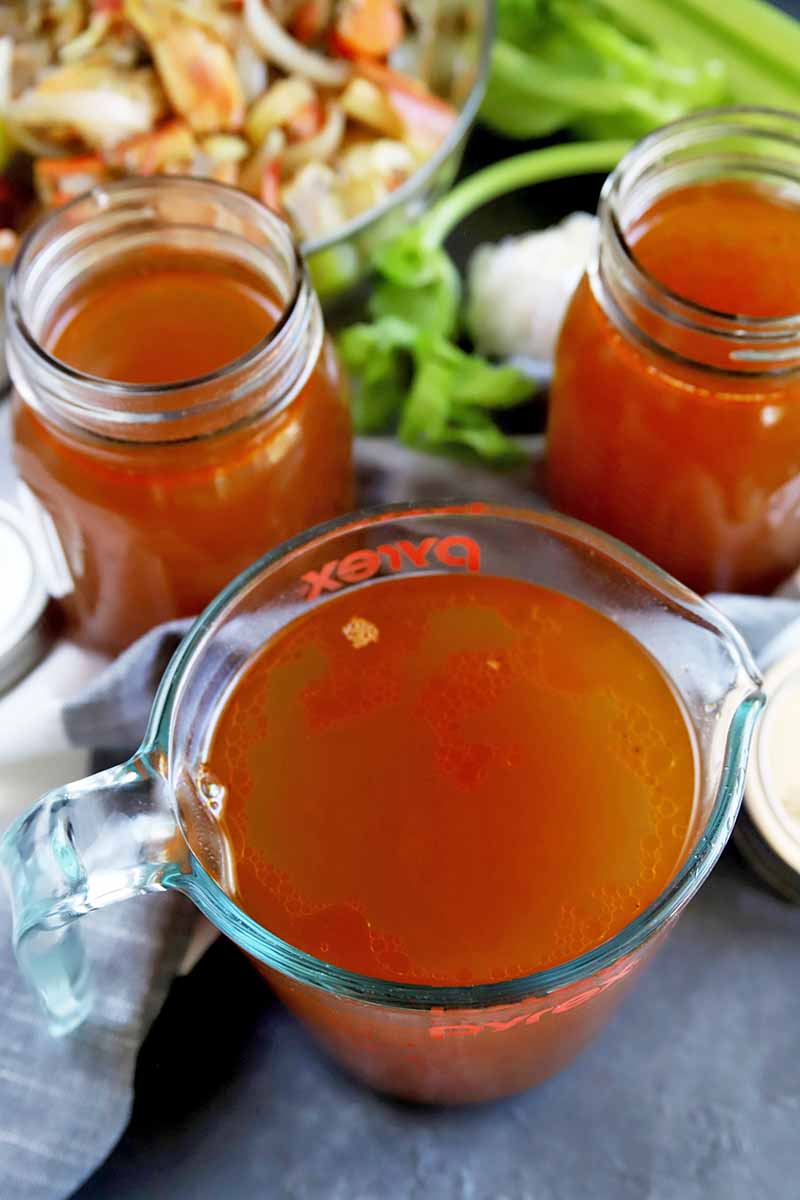
Strain it out and save up that stock for whatever recipe you want. I’m actually planning to ask my husband to whip up some gumbo tonight with the batch that’s in the fridge right now. Yum!
Print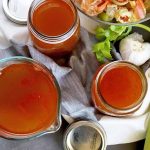
Easy Homemade Seafood Stock
- Total Time: 1 hour, 25 minutes
- Yield: 2 quarts 1x
Description
No need to throw out those shells when you can use them all to make homemade seafood stock. You can use it in so many different ways.
Ingredients
- 4–6 cups shellfish shells (shrimp, lobster, and/or crab)
- 2 tablespoons olive oil
- 1 large yellow onion, sliced
- 2 carrots, roughly chopped
- 2 celery stalks, roughly sliced
- 2 garlic cloves, smashed
- 2 1/2 quarts water
- 2 tablespoons tomato paste
- 1/2 cup dry white wine
- 1 bay leaf
- 4 sprigs thyme
- 1 1/2 teaspoons black pepper
- 2 teaspoons salt
Instructions
- Break up larger pieces of shell by placing in a resealable bag and hitting with a meat mallet or rolling pin. You can use whole shrimp shells, so don’t add those to the bag.
- Add oil to a stockpot over medium heat. Add shells, onions, carrots, and celery. Saute for 15 minutes, or until lightly browned.
- Stir in garlic and cook for another 2 minutes. Add 2 1/2 quarts of water, tomato paste, white wine, bay leaf, thyme, black pepper, and salt. Bring the mixture to a boil, then reduce to a simmer and continue to cook for 1 hour.
- Strain through a sieve, pressing the solids. You should have about 2 quarts of stock.
- Use stock right away or store it. See the end of this article for storing instructions.
- Prep Time: 10 minutes
- Cook Time: 1 hour, 15 minutes
- Category: Seafood
- Method: Stovetop
- Cuisine: Stock
Keywords: seafood, stock, shelfish
Cooking By the Numbers…
Step 1 – Chop Vegetables, Smash Garlic, And Measure Remaining Ingredients
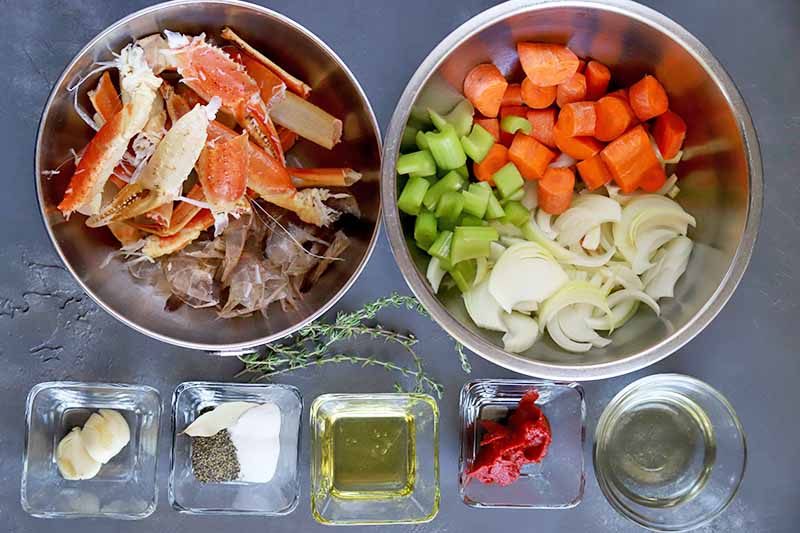
Peel and slice one large yellow onion, using a sturdy cutting board and a sharp knife.
Clean and roughly chop two carrots, and two celery stalks.
Peel and smash two cloves of garlic. Use a garlic press instead if you want a little less work for yourself!
Measure out all of the remaining ingredients on the ingredients list.
Step 2 – Break Up Shells
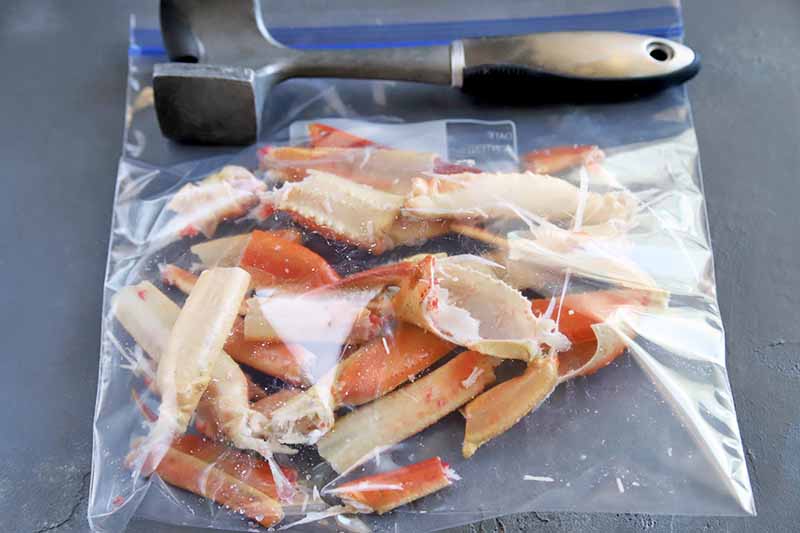
Add the larger pieces of shell to a resealable plastic bag. Use a meat hammer or a rolling pin to break up the larger pieces.
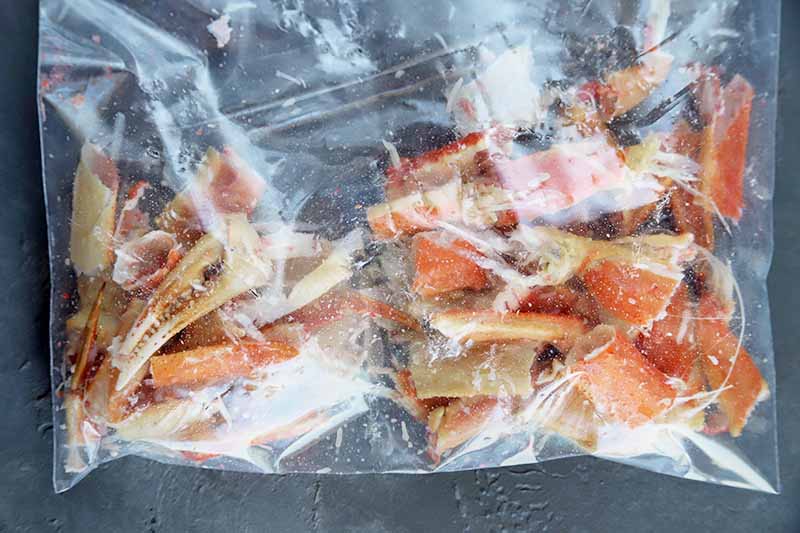
Don’t worry about adding the shrimp shells to the bag, you can use them whole.
Step 3 – Saute Vegetables and Shells
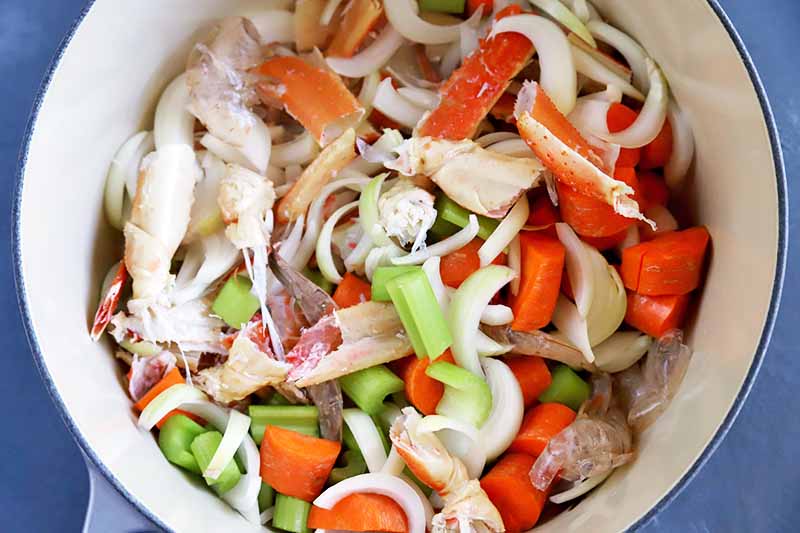
Add the olive oil to a large stockpot over medium heat. Add the shells, onions, carrots, and celery to the hot oil and stir to combine.
Saute for 15 minutes, stirring occasionally, until the vegetables are lightly browned.
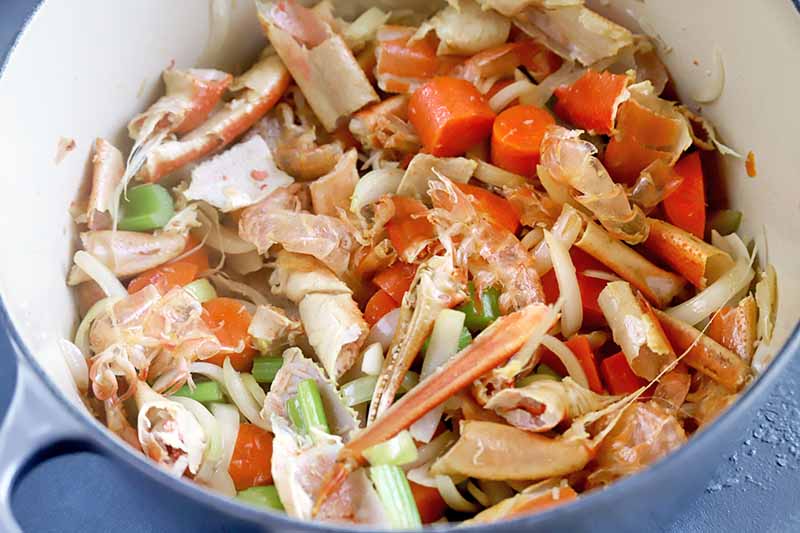
Stir in the garlic and cook for 2 more minutes.
Step 4 – Cook
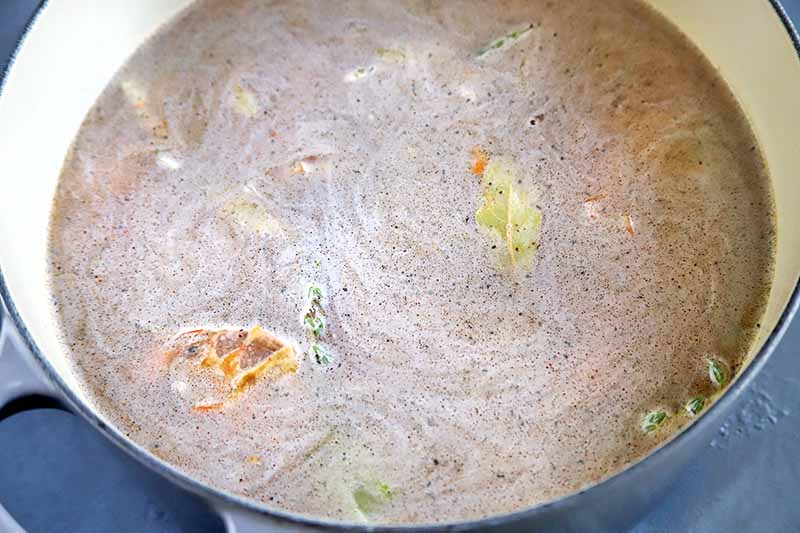
Stir in 2 1/2 quarts of water along with the tomato paste, white wine, bay leaf, thyme, black pepper, and salt (freshly cracked, please and thank you!). Stir to combine.
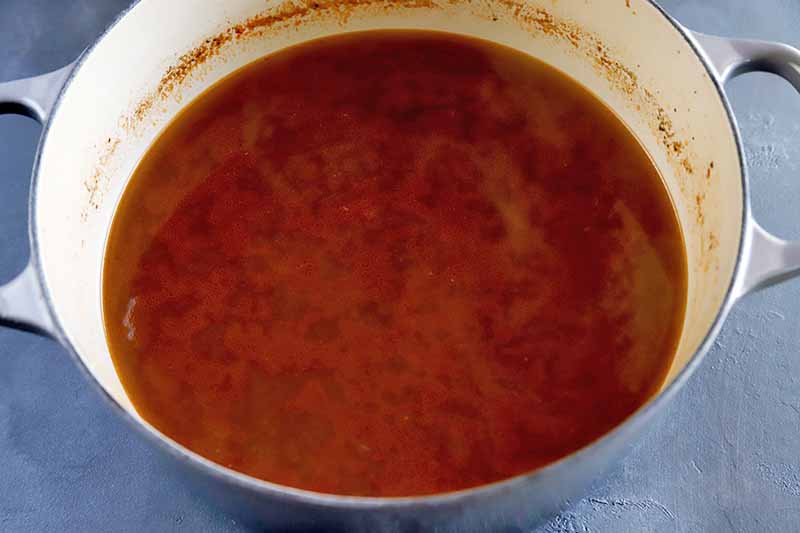
Bring the mixture to a boil, then reduce to a simmer and cook for an hour.
Step 5 – Strain

Strain the mixture through a sieve, pressing down the solids to get as much of the flavor out as possible.
Use the stock right away, or you can store it as follows.
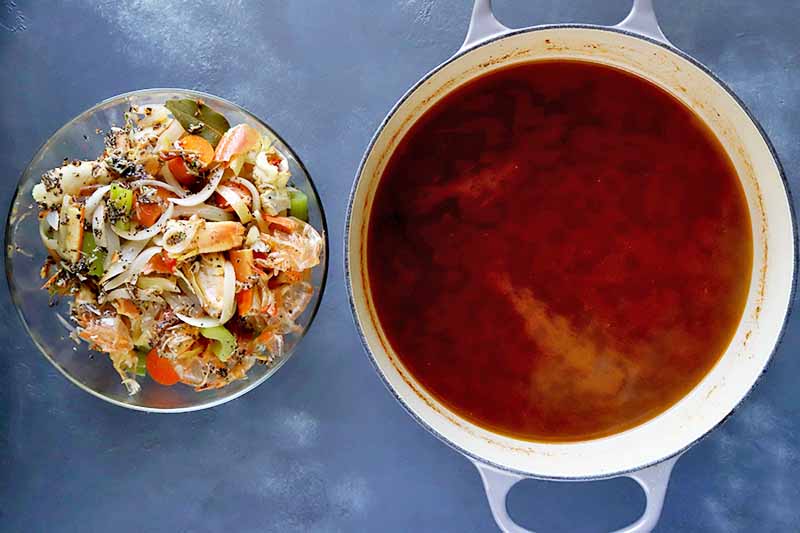
I’m Not Using It Right Away – What Do I Do?
What if you aren’t going to use this stock right away in a recipe?
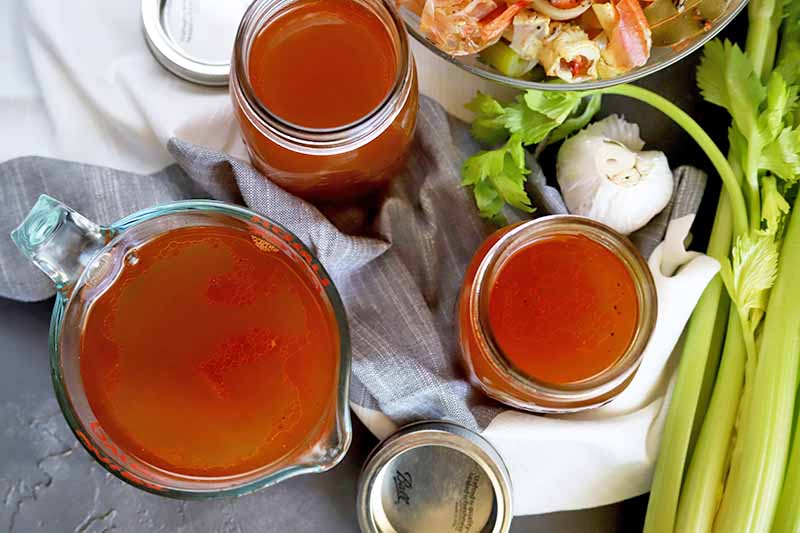
That’s no problem. Simply cool the stock down to room temperature, then add it to an airtight container.
Stock can be stored in the refrigerator for up to 2 days. If you aren’t planning to use it that quickly, you can freeze it until you need it.
Just need a little bit at a time? Try freezing stock in ice cube trays so you’ll have small portions ready to go, without any need to thaw the whole batch.

Interested in making other stock recipes at home? You can check out our full article on how to make broths and stocks here. We also have a slow cooker chicken stock recipe that you might enjoy.
What recipe will you use this stock in first? Tell us in the comments below and be sure to rate the recipe as well!
Photos by Meghan Yager, © Ask the Experts, LLC. ALL RIGHTS RESERVED. See our TOS for more details. With additional writing and editing by Allison Sidhu.
Nutritional information derived from a database of known generic and branded foods and ingredients and was not compiled by a registered dietitian or submitted for lab testing. It should be viewed as an approximation.
About Meghan Yager
Meghan Yager is a food addict turned food and travel writer with a love for creating uncomplicated, gourmet recipes and devouring anything the world serves up. As the author of the food and travel blog Cake 'n Knife, Meghan focuses on unique foodie experiences from around the world to right at home in your own kitchen.


